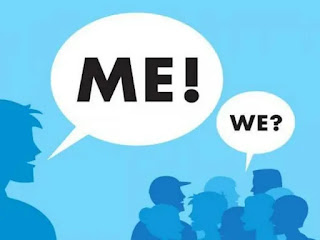Emotional Expressivity
October 20, 2020 Week 6 Response to Emotional Expressivity
How do we express ourselves? Do we do it through body language or facial expressions? Does our culture have an effect on how we show our true feelings in public? These are a few of the questions I asked myself as I watched a lecture by Professor John Ivers from Brigham Young University Idaho.
Deep down we all have the same emotions, how we express them in public can be different depending on where we grew up. This is our Emotional Expressivity. We may not all show the same feeling of emotion on the outside. On Professor Ivers’ ‘Emotion Excessively Scale’, he showed Asians, English, and Scandinavia to be less tolerance of public emotions than their higher tolerance counterparts in the Hispanic, or Italian cultures. Americans, interestingly enough were found to be in the middle of the scale, with what part of the U.S. you come from tipping the scale either way. I’ve heard the saying from the British to, “Keep a stiff upper lip.” before. It now makes more sense to me, meaning in their culture you don’t show your true emotions on the outside. To understand the other side of the scale, I think of how Italians will greet people friendly with a kiss on the cheek. Their emotions are more widely displayed.
Facial expressions can be judged differently from culture to culture as well. While researching this topic, I found on article from, “The School of Manners.com”. They were discussing the difference in how ‘feeling’ emoji’s are expressed differently in cultures. “Culturally, Japanese, Chinese, South Koreans for example employ a vertical style like ˆ ˆ, while Westerners employ a horizontal style like :-) of emoji’s.” “This difference may be due to cultural reasons since most Eastern cultures are known to interpret facial expressions from the eyes, while Westerners tend to seek emotion an emoticon’s mouth.” So intriguing that cultures look at different facial expressions to help them ‘see’ another’s emotions.
In a classroom with ESL learners it will be important to take into account the body language and facial expressions of the student’s Emotional Expressivity. Hopefully they are all learning but by being aware of how they express emotions in public will help me as a teacher. I shouldn’t take a student’s outwardly coldness to mean they aren’t enjoying a class and I should watch how I show my emotions through my eyes. After all, the “eyes are the windows to the soul.” It’s always good for the teacher to be aware of other’s Emotional Expressivity.
Sites mentioned:
https://video.byui.edu/media/05+Differences+in+Emotional+Expressivity/0_753le546
https://www.theschoolofmanners.com/blog/top5-emojis-cultural-differences



Love the photo you've chosen to introduce your topic! I agree in our own domain we all have the same expressions, but how we display this outside the domain is relevant to us as teachers. And we need to always remember that we cannot take another person, or our students outward expression too personally. This is going to be difficult for me personally as I use literally my whole body to talk and express myself, my family always say that I cannot hide my feelings as my facial expression won't allow me.
ReplyDeleteThank Alisa for sharing this fact about emojis, I found it very interesting. So now, en eventually when children return to classroom in the context of the pandemic, we will need more than ever learn to decode those sights in order to understand what they are expressing.
ReplyDelete